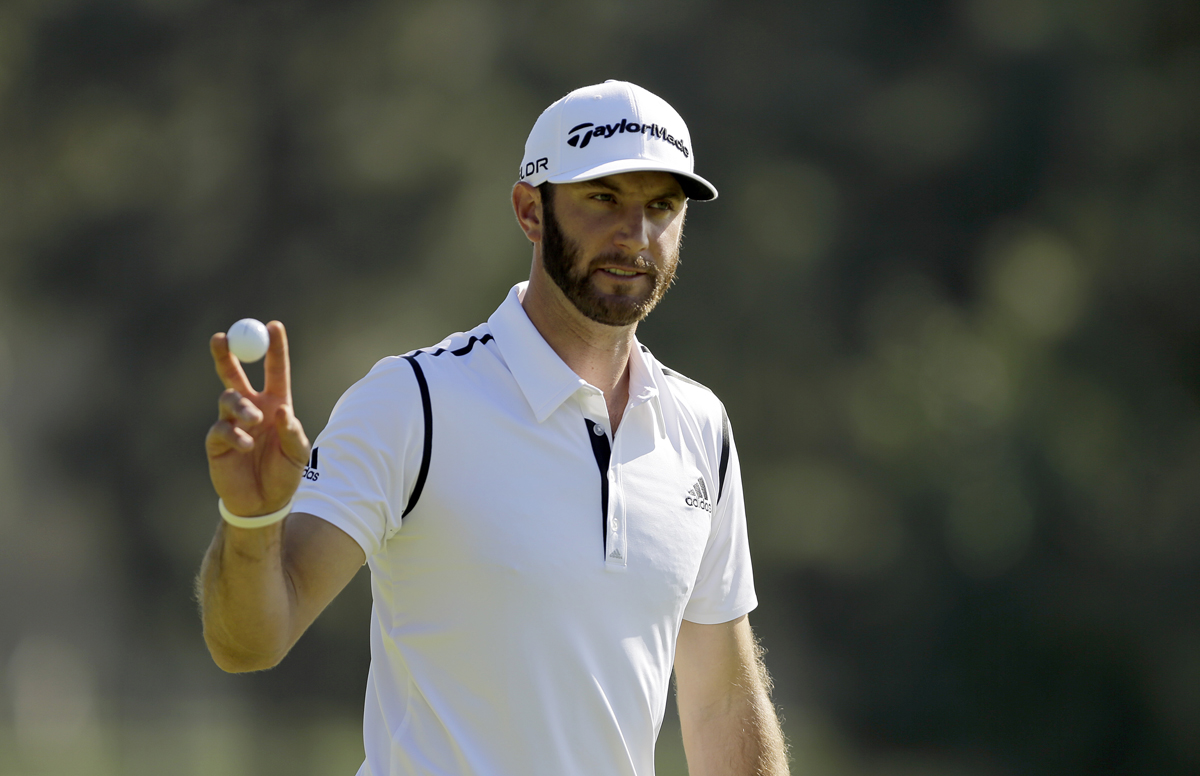Jason Day had a front-row seat for the drama, in the perfect setting for great theater.
He was standing on the 18th green at Chambers Bay, the 72nd hole of the 2015 U.S. Open, watching his playing partner, Dustin Johnson, attempt a 12-foot putt for eagle that could win the tournament and end his personal heartaches in major championships.
Jordan Spieth, the reigning Masters champion, had birdied the final hole just moments earlier to finish as the clubhouse leader at 5-under par 275. Day, the 54-hole leader, and Johnson were the final twosome of the day.
Day, who was out of contention, was expecting Johnson to make the putt. He was expecting one of those amazing moments that happen sometimes to end a major tournament.
“Twelve feet,” Day said. “I mean, from 12 feet, even though it is down the hill, I mean, with the scenery there was, the grandstands and everything, it was just set up for a finish like that, with him holing the putt. I honestly thought he’s going to hole this putt and the crowd’s going to go nuts.”
Instead, the world got another kind of amazing moment. The kind that wrenches your gut and numbs your senses.
Johnson missed that 12-foot putt. He watched it stay on the high side of the hole and slide a slippery 3 feet past the cup. He wouldn’t be the outright winner, but Johnson still had a chance to make birdie, tie Spieth and force an 18-hole Monday playoff. All he had to do was make the comebacker from 36 inches.
“I putted out first, trying to give him the opportunity — if he holed that putt, because it was very holeable — give him the glory to fist pump or do whatever he wanted to if he holed that putt to win the U.S. Open,” Day said. “And then he hit the putt past, and then I’m sitting there going, OK, that’s a pretty difficult putt coming back up. I didn’t realize he’d hit it that hard.”
And then Johnson missed again. His 3-foot birdie putt slid on the left edge of the cup. It was Scott Hoch at the 1989 Masters and Phil Mickelson at Winged Foot in 2006 rolled into one.
“He went in there pretty quick,” Day said. “He lined it up pretty quick and hit it and then, unfortunately, missed it.”
“It just kind of bounced left,” Johnson said. “It wiggled. It’s the golf course we were playing and something we have to deal with.”
Spieth, sitting in the clubhouse, was stunned.
“I certainly felt bad for him,” Spieth said. “I would have ultimately liked him to have made the second putt, and I would have liked to have beat him on Monday.”
Spieth comes to Oakmont Country Club as the defending champion, trying to become the first player since Curtis Strange in 1989 to defend his U.S. Open title. But, it very easily could have been Johnson. Nine months later, Spieth would experience a similar shocking moment at the 12th hole at the Masters.
“I honestly felt like he should have won that event,” Day said Tuesday before playing a practice round at Oakmont. “I think if it went to 18 holes on Monday, it would have been a very exciting match between Jordan and Dustin. I don’t know who would have won, but it would have been exciting. Obviously, in my head, I thought that he was going to hole it.”
The issues that plagued Chambers Bay — among them, the poor condition of the greens — should not be a factor at Oakmont. The greens are as smooth as they are fast, and that is good news for Johnson as he seeks some form of redemption when the 116th U.S. Open begins Thursday.
“This year is going to be a little different,” Johnson said. “The greens here are great. Balls aren’t going to be bouncing. If you hit a good putt they’re going to go in.”
Gerry Dulac: gdulac@post-gazette.com and Twitter @gerrydulac.

Comments
Login Register Logout